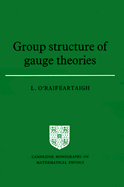Book contents
9 - Gauge theory of the non-gravitational interactions
Published online by Cambridge University Press: 04 April 2011
Summary
Introduction
The fundamental physical interactions known at the present time are the gravitational, electromagnetic, strong nuclear and weak nuclear forces respectively. In this chaper it will be shown how the gauge theory of chapters 7 and 8 are used to describe the latter three interactions, and to introduce a certain degree of unification among them.
Gauge theory of the strong interactions
The early theories of the strong interactions were local Lagrangian theories, with the baryons and mesons playing the role of local fields. Once the non-local nature of the baryons became apparent (through the EM form-factors for example) these theories became untenable and there came a period in which local Lagrangians were abandoned in favour of more general structures, such as analytic S-matrix theory and current algebra. The advent of quark theory, however, has permitted a return to local Lagrangians with the quarks taking over the role of the fermions and non-abelian gauge fields (gluons) that of the mesons, and this is the theory that is used at present. In this theory the baryons and mesons are regarded as composite fields, with interactions which are themselves non-local but are generated by the local quark–gluon interactions (Isgur and Karl, 1983). An analogy, perhaps, is the case of non-local molecular interactions generated by local quantum electrodynamics.
There are a number of reasons why non-abelian gauge fields are chosen as gluons (so called because they generate the quark binding forces), namely: (i) the success of gauge theory for the electroweak interactions; (ii) the fact that gravitation is also a gauge theory; (iii) the pre-existence of an exact rigid symmetry (colour), ripe for gauging; and (iv) the asymptotic freedom of non-abelian gauge theories.
- Type
- Chapter
- Information
- Group Structure of Gauge Theories , pp. 101 - 109Publisher: Cambridge University PressPrint publication year: 1986



